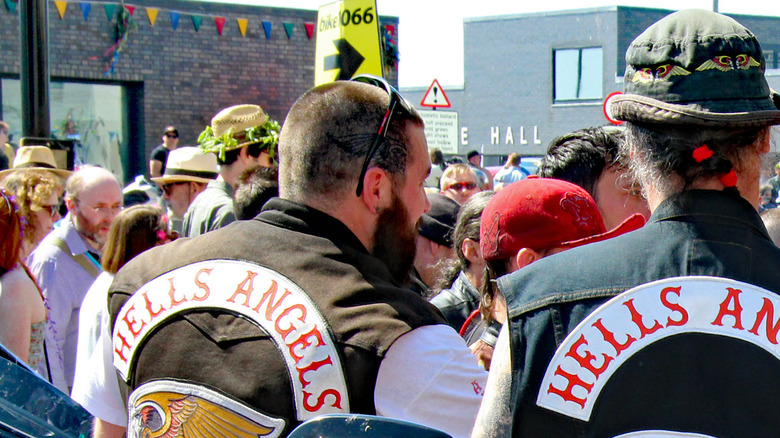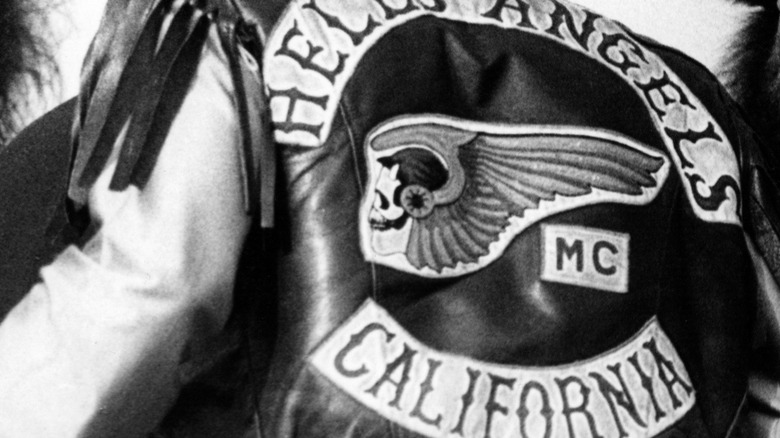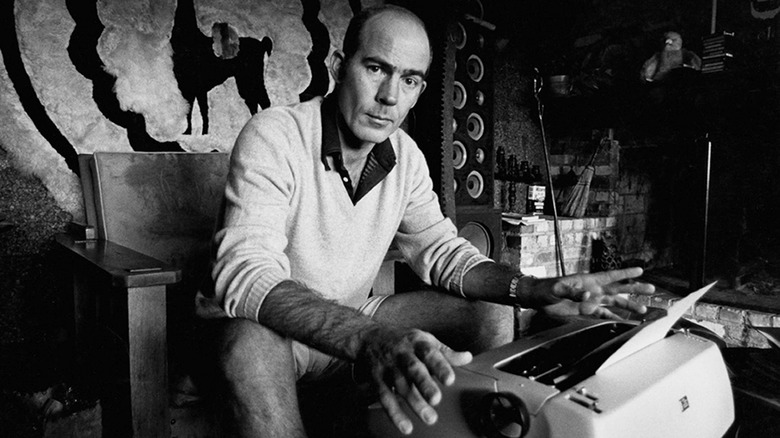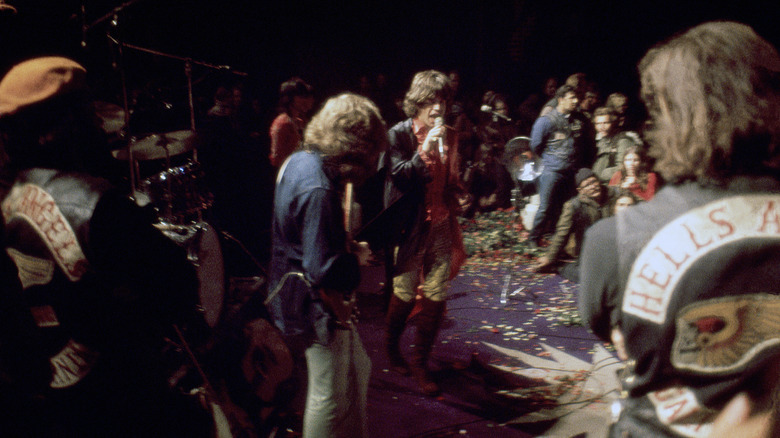Here's What Turned The Hells Angels Into 'Criminals'
The Hells Angels have been around for well over seven decades, and nowadays, it's not uncommon for people to perceive them as criminal low-lives similar to how biker gangs are/were portrayed on today's TV shows and movies. But back in their early days, the Angels were largely seen as badass bikers who did right by their communities and just so happened to be nonconformists who went against the squeaky-clean "Leave it to Beaver" ideals of 1950s America. Never mind that you had films like Marlon Brando's "The Wild One" that explored the violence that was already prevalent in the motorcycle gang scene. These bikers were chaotic neutral for the most part — that is, until a series of incidents transformed them into chaotic evil in the eyes of many. And much of it has to do with California Attorney General Thomas C. Lynch's extensive report about the Hells Angels' purported criminal activities.
Although it's easy to see why Lynch's eponymous 1965 report was the catalyst that transformed an outlaw motorcycle club into an organization more commonly referred to as a gang, there are a few moments that also took place in the 1960s and were arguably just as pivotal in redefining the Angels' public perception. Here's a closer look at the Lynch Report, as well as two other factors that also helped turn the Hells Angels into "criminals."
The Lynch Report helped establish the Hells Angels as a criminal group
By 1964, motorcycle clubs such as the Hells Angels had been cultivating an increasingly unsavory reputation for years due to their penchant for petty crimes and general bad behavior. But it was during that year's Labor Day Weekend when things reached critical mass, as the "uneasy truce" between bikers and the residents of Monterey, California, came to an unceremonious end, as recalled by SF Weekly. On September 6, 1964, reports claimed that two teenage girls were "raped by a score of the hell-for-leather cyclists." This led to four Hells Angels getting sent to jail and biker gangs getting completely banned from Monterey by the city's then-police chief, Frank Marinello.
"The girls were sobbing hysterically," read a UPI report on the alleged sexual assaults. "They told police they had been stripped, raped and subjected to numerous indecencies by a score of youths."
Following the incident, California Attorney General Thomas C. Lynch kicked off a six-month investigation into the Hells Angels (via The New York Times), eventually revealing that the group had collectively accumulated 874 felony arrests, 300 felony convictions, 1,682 misdemeanor arrests, and 1,023 misdemeanor convictions throughout its history. Lynch's report also noted that only 85 of the 151 members involved in the felony convictions had actually been sent to state prisons or reform schools.
Although the Hells Angels vehemently disagreed with a lot of what Lynch wrote in his report, California law enforcement officials used the findings to refine their crackdown on motorcycle gangs.
Hunter S. Thompson goes gonzo with the Angels
Among the many journalists piqued by the increasing media focus on the Hells Angels was Hunter S. Thompson. In 1965, the young, largely unknown San Francisco-based writer published an article for The Nation, where he opined that the "difference between the Hell's Angels in the paper and the Hell's Angels for real is enough to make a man wonder what newsprint is for." He then blended in with the gang as he worked on his first book, "Hell's Angels: The Strange and Terrible Saga of the Outlaw Motorcycle Gangs," writing on its pages that the group "[tries] not to do anything halfway" and believes in "total retaliation" for any perceived slight. Thompson got a first-hand taste of that when, shortly after writing a first draft of the book, he was beaten up for getting in the way of an Angel who was physically assaulting his wife and dog.
Thompson's book largely criticized law enforcement and the media — not to mention the Lynch Report — for unfairly vilifying the gang (via The New York Times). He wrote that the group's membership count was exaggerated and that the statistics noted on the Lynch Report were likewise inflated due to police harassment. However, that didn't mean the gonzo journalist shied away from highlighting the Angels' criminal activities as part of their counterculture lifestyle.
The Altamont incident
While Hunter S. Thompson duly documented the wilder side of the Hells Angels in his 1967 book, it wasn't until December 1969 that murder truly entered the conversation and further solidified the gang's criminal reputation. The Rolling Stones' concert at Altamont Speedway in Northern California was supposed to be a celebration of peace and love not unlike the original Woodstock a few months prior. However, things turned deadly during the Stones' set as a Black teenager named Meredith Hunter was killed by an overzealous group of Hells Angels — in an absolutely head-scratching decision, the group was asked to serve as security during the free concert, only for several gang members to take things too far.
According to an eyewitness who spoke to Rolling Stone, the 18-year-old Hunter had tried to get onstage when the Angels started beating down on him. "[Hunter] just gave him a weird look, kind of a mean look, and yanked away," the eyewitness continued. "He didn't give him any verbal provocation or anything. So they're chasing through the crowd. And they hitting him and one Hell's Angel pulled out a knife and stabbed him in the back." Hunter then pulled out a gun, possibly in a last-ditch effort to scare his attackers away, but the Angels reportedly grabbed the firearm from the teen and stabbed him several more times.
Per The New York Times, Hells Angels member Alan Passaro was charged with Hunter's murder but was acquitted after it was found that he acted in self-defense. Nonetheless, the fact that the incident was featured in the 1970 documentary "Gimme Shelter" was instrumental in cementing the gang's reputation as violent criminals.



